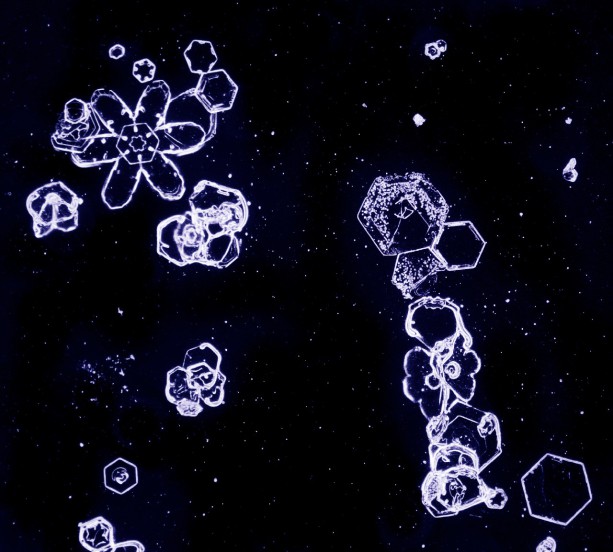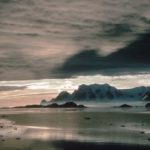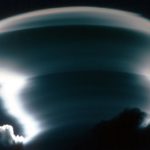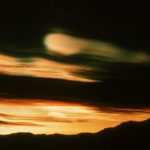Although the Antarctic atmosphere is normally freezing many Antarctic clouds contain both water droplets and ice crystals. Within a cloud, ice crystals will only form if a special type of particle is present for the ice to form on. This means that a cloud below freezing may contain many water droplets but only a few ice crystals.

The image shows a microscope photograph of a cloud sampled over the Antarctic Peninsula; the droplets appear as small spheres while the ice crystals in this cloud have taken the form of flat hexagonal prisms and star-like flakes. The exact shape of the ice crystals depends on the temperature they form at. In the interior of Antarctica the temperature is very low (below -50°C) and here the clouds tend to be made up solely of ice particles.
Antarctic clouds are often very similar in appearance to those found at lower latitudes, with the exception that deep convective clouds, such as those that form in thunderstorms, are rarely observed as they require a warm surface to start the convection. The areas around the coast of Antarctica are amongst the cloudiest places in the world.
Lenticular clouds
When mountains provide an obstruction to the flow of winds there is strong turbulence and uplift and lenticular clouds frequently form. Sometimes these are in unusual formations called ‘stack-of-plate’ clouds. When seen over the Rocky Mountains clouds like these were thought to be Unidentified Flying Objects!
Nacreous clouds
Special clouds known as stratospheric clouds (also known as stratospheric or mother-of-pearl clouds) form in the ozone layer during the winter, and are responsible for some of the chemistry that leads to the formation of the Antarctic ozone hole.
Noctilucent clouds
Even higher in the atmosphere are noctilucent clouds. These silvery clouds form during the summer months at heights around 80km. You can only see them after sunset, hence the name, which means ‘night luminous’. They are usually only seen from areas outside the polar circle up to 50° latitude, and hence are rarely observed in the southern hemisphere.



